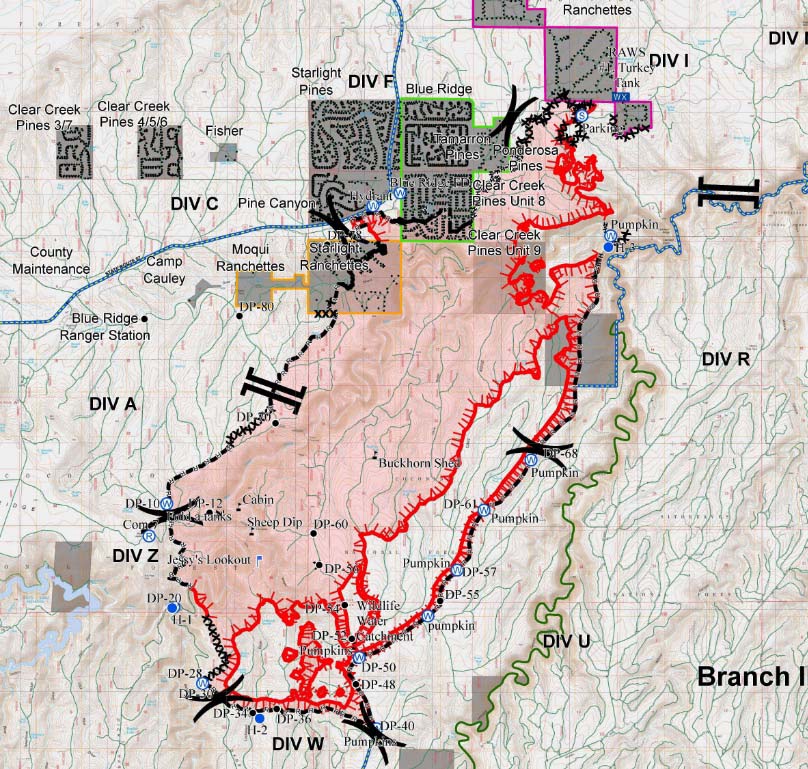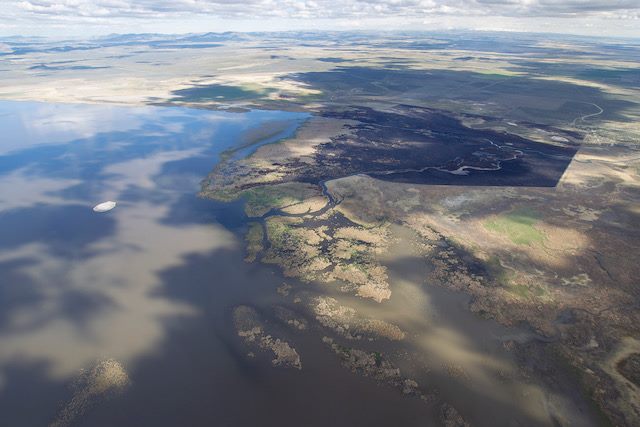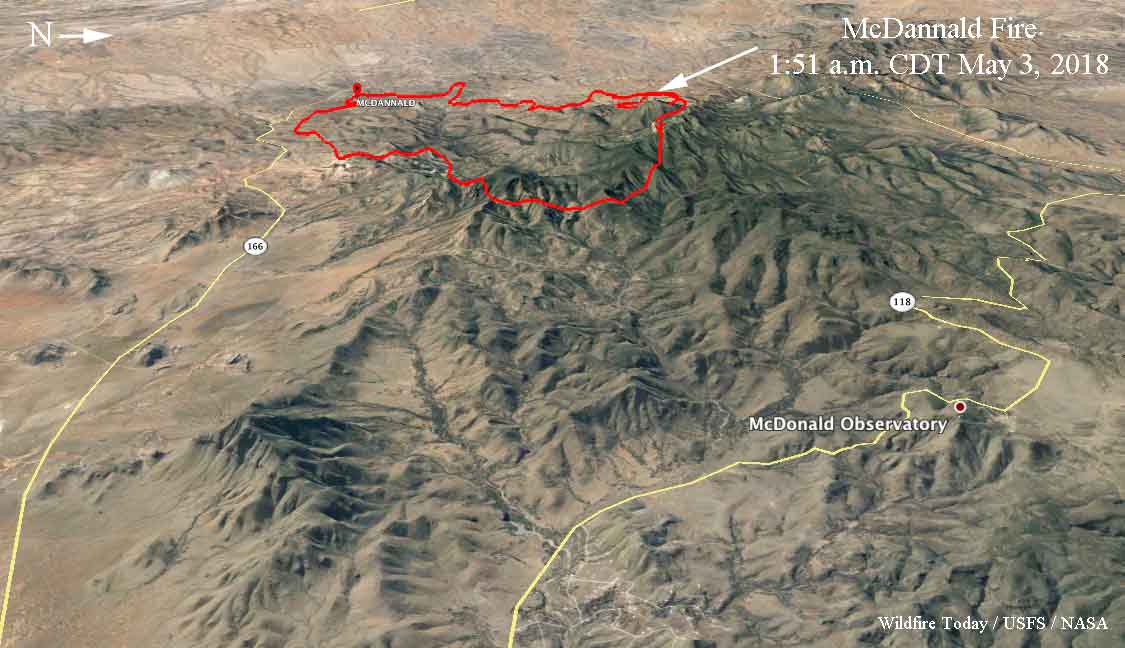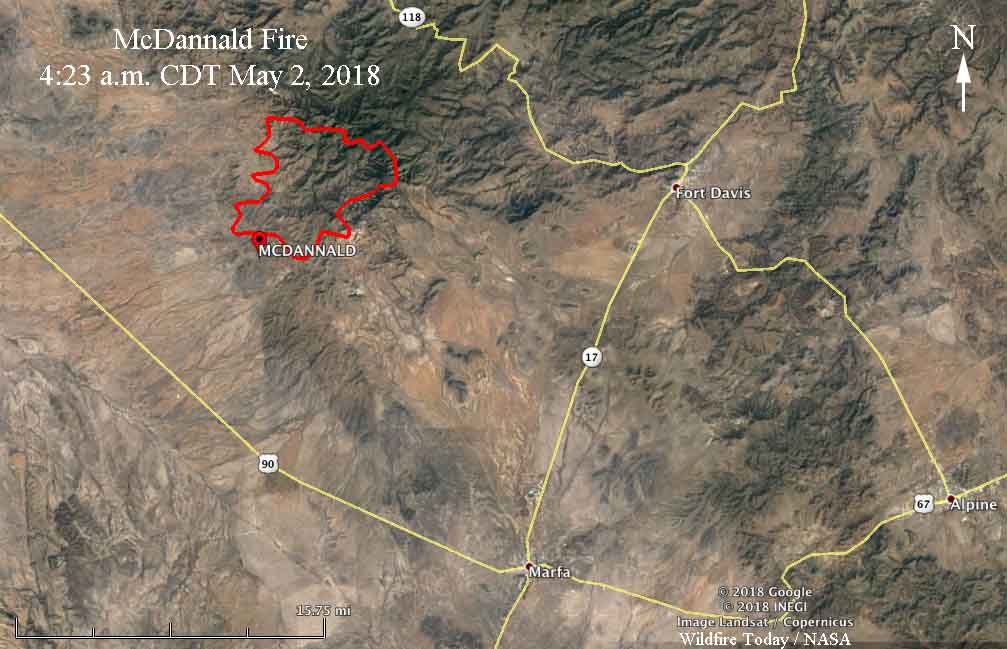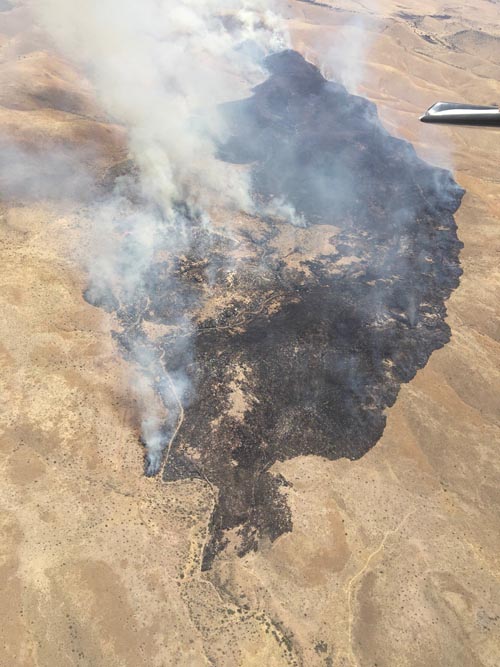Personnel are mopping up in some areas, but Southwest Incident Management Team #1 reports “zero percent” of the fireline is contained.
The Tinder Fire between Payson and Winslow Arizona received light rain and snow over the last 24 hours. This raised the humidity and a satellite overflight early Wednesday morning detected no large heat sources. However, cloud cover may have blocked the sensors on the satellite. A fixed wing mapping flight scheduled overnight had to be cancelled due to weather.
(To see all articles on Wildfire Today about the Tinder Fire, click here.)
On Tuesday fire crews burned off seven miles of existing Forest Service roads to create continuous containment lines from along the west flank. Wednesday’s objective is to carry this new containment line north to Mogollon Ranchettes.
Fire crews working with the support of Type 1 heavy helicopters built containment line entirely around the spot fire near Leonard Canyon Tuesday. They were able to hold the spot at approximately 5 acres. As conditions allow, helicopters will continue with water drops to suppress remaining heat.
Coconino County will be notifying property owners about structures that have been damaged or destroyed.
The Coconino County Sheriff’s Office evacuation for all Blue Ridge Tinder Fire affected communities north, east and west of Hwy 87 remains in effect. The evacuation will remain in effect until firefighters are able to contain the west and north flanks of the fire and are confident there is no longer a threat to communities.
FEMA Region 9 and other sources are reporting that the fire was caused by an abandoned illegal campfire.
After the precipitation, personnel are mopping up further into the burn area in some areas rather than having to concentrate on building fireline. But Bea Day’s Incident Management Team (IMT) on Wednesday reported “zero percent containment” on the fire. According to the National Wildfire Coordinating Group’s Glossary, 100 percent containment would be when “a control line has been completed around the fire, and any associated spot fires, which can reasonably be expected to stop the fire’s spread”. If, for example, 10 percent of the fire perimeter has fireline (where fuel has been removed) and that section of the perimeter is not likely to spread, some IMTs will call it 10 percent contained. Other teams release to the public a containment figure using very different criteria. This is why Wildfire Today rarely includes containment percentages, since they can be meaningless.
